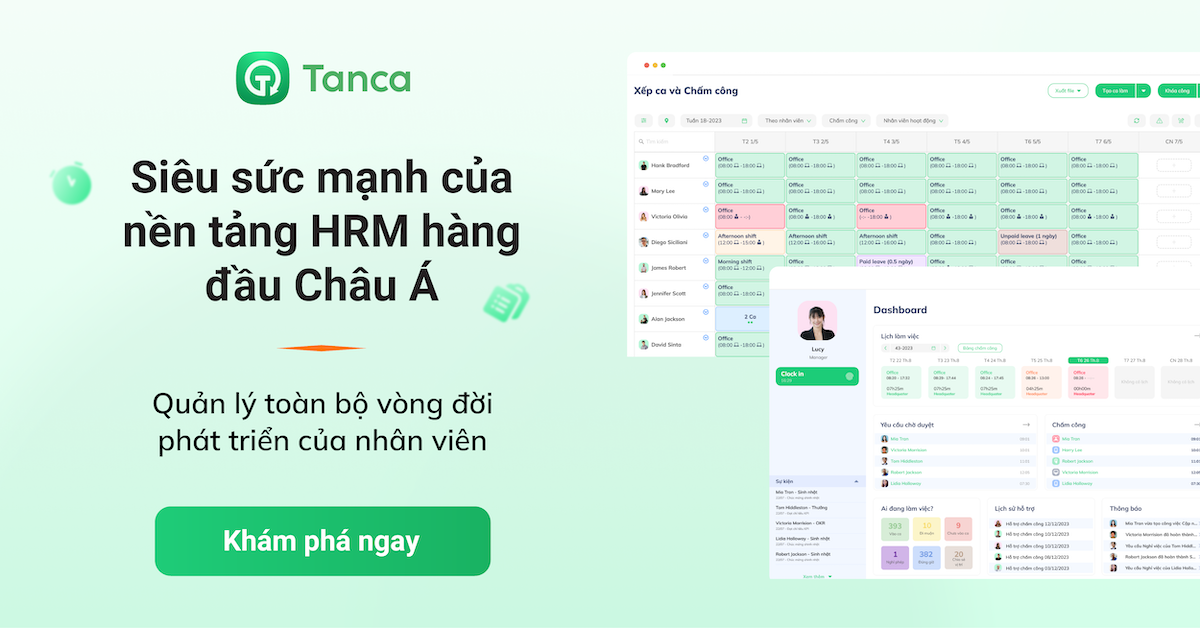Virtual onboarding has become a crucial practice in today's business world, especially as companies embrace remote work and global talent acquisition. This process involves welcoming and integrating new employees into an organization using online platforms and digital tools.
Recent research has shown that "Virtual onboarding programs that are structured, communicated clearly, and executed effectively can be just as successful as traditional face-to-face onboarding in fostering organizational commitment and job satisfaction among new employees." This finding highlights the potential of well-designed virtual onboarding to create a positive impact on new hires, even in a remote setting.
In this post, Tanca will explore virtual onboarding: its definition, pros and cons, process and best practices, successful examples, and how it compares to traditional, in-person onboarding.
What Is Virtual Onboarding?

Virtual onboarding is the process of integrating new employees into an organization using digital tools and technologies, particularly in remote or hybrid work environments. Instead of traditional face-to-face onboarding, virtual onboarding utilizes online platforms, video conferencing, digital training modules, and other technological solutions to provide a comprehensive orientation experience for new hires. This approach allows companies to welcome, train, and integrate employees effectively, regardless of their physical location.
Virtual onboarding is indeed a growing trend that is likely to continue in the future. The COVID-19 pandemic accelerated the adoption of remote work practices, and many companies are maintaining hybrid or fully remote work models.
Companies that benefit most from virtual onboarding include those with remote or distributed workforces, multinational corporations, tech companies, and organizations embracing flexible work arrangements. However, as the business world continues to evolve and adapt to changing work environments, virtual onboarding is becoming increasingly relevant for companies of all sizes and industries.
Read more:
Pros And Cons Of Virtual Onboarding
Businesses should understand the pros and cons of virtual onboarding to make informed decisions about its implementation and effectiveness. By recognizing the benefits, such as cost savings and flexibility, companies can leverage these advantages to enhance their onboarding processes.
| Element | Pros | Cons |
| Cost | Reduces expenses related to travel, venue rentals, and physical materials. | Potential for technical issues that can disrupt sessions. |
| Flexibility | Allows new hires to complete onboarding at their own pace and schedule. | Lack of personal interaction may hinder relationship building with colleagues. |
| Scalability | Easy to onboard multiple employees simultaneously across various locations. | New hires may experience feelings of isolation from the team. |
| Standardization | Ensures a consistent onboarding experience across all new hires. | Conveying company culture can be more challenging remotely. |
| Talent Pool | Enables recruitment from anywhere, increasing diversity and skill sets. | Some roles may require hands-on training that is difficult to provide virtually. |
| Tracking | Easier to monitor progress and engagement through digital tools. | New hires may feel overwhelmed by the amount of digital content. |
| Digital Skills | Enhances new employees' comfort with technology and remote tools. | Requires self-motivation, which may be difficult for some individuals without direct supervision. |
Virtual Onboarding Process And Practices

Businesses must understand the virtual onboarding process because it's crucial for effectively integrating new remote employees into the organization. A well-designed virtual onboarding process can significantly improve employee retention, productivity, and engagement. Research shows that a strong onboarding process can increase new hire retention by up to 82% and boost productivity by over 70%. In the case of Tanca, implementing a virtual onboarding process led to a remarkable 55% increase in performance after just 6 months of application. This demonstrates the tangible benefits of investing in a comprehensive virtual onboarding strategy, especially in today's increasingly remote work environment.
Here is the process:
Pre-onboarding Phase (1-2 weeks before start date)
The pre-onboarding phase is critical for setting up a smooth transition for new remote employees. During this time, HR should focus on several key tasks to ensure that new hires are well-prepared and feel welcomed even before their first day.
During this time, HR should focus on several key tasks:
1. Create a checklist of required employee information, including:
- Full name and contact details
- Emergency contact information
- Bank account details for payroll
- Tax identification number
- Social security number
- Work visa information (if applicable)
2. Set up account credentials for necessary platforms, such as:
- Company email
- Communication tools (e.g., Slack, Microsoft Teams)
- Project management software (e.g., Asana, Trello)
- Time tracking tools (e.g., Toggl, Harvest)
- Cloud storage (e.g., Google Drive, Dropbox)
- HR management system (Tanca)
3. Arrange for the delivery of work equipment to the new hire's location, including:
- Laptop or desktop computer
- Monitor(s)
- Keyboard and mouse
- Headset with microphone
- Office chair (if provided by the company)
- Any role-specific equipment
4. Prepare and send digital administrative paperwork using secure e-signature tools:
- Employment contract
- Non-disclosure agreement (NDA)
- Employee handbook acknowledgment
- Tax forms (e.g., W-4, I-9)
- Direct deposit authorization form
5. Draft and send a welcome email containing:
- First-day schedule
- Links to company resources (employee handbook, org chart)
- Instructions for accessing company systems
- Contact information for IT support
- Virtual office etiquette guidelines
6. Schedule virtual meet-and-greets with:
- Direct supervisor
- Team members
- HR representative
- IT support contact
First Day/Week Orientation
The first day or week is dedicated to orientation, starting with a virtual welcome session that covers the company's history, mission, and values.
This session should also provide an overview of the organizational structure and key departments, as well as company policies and procedures. Conduct a virtual office tour or share a pre-recorded video tour to give new hires a sense of the physical workspace. Facilitate a team introduction meeting to help new employees meet their colleagues and feel part of the community. Ensure IT support is readily available to troubleshoot any technical issues that may arise.
Provide a detailed schedule for the first week, including training sessions and regular check-ins, to guide the new employee through their initial days and help them acclimate to their new role.
Role-specific Training (Week 1-2)
Role-specific training is crucial for equipping new hires with the skills and knowledge needed for their positions.
HR should prepare a customized training plan based on the role and schedule daily virtual training sessions covering job responsibilities, key tools, and company-specific processes.
Assign an experienced team member as a mentor to provide personalized guidance and support.
Set up shadowing sessions with relevant team members to give new hires practical insights into their roles. Establish clear goals and deliverables for the first 30 days to give new hires a sense of direction and purpose.
This structured approach ensures that new employees are well-prepared to contribute effectively to their team and the organization.
Company Culture and Social Integration (Ongoing)
Integrating new hires into the company culture and social fabric is essential for long-term engagement. Organize weekly virtual team-building activities, such as online games and virtual coffee breaks, to foster camaraderie and help new employees feel connected to their colleagues. Schedule informal one-on-one video chats with team members to encourage casual interactions and build relationships. Assign a "buddy" for ongoing support and to answer any questions the new hire may have. Share information about employee resource groups and virtual social clubs to help new hires connect with others who share similar interests or backgrounds. Host a virtual "meet the executives" session within the first month to help new hires feel more connected to the leadership team and understand the company's vision and goals.
Ongoing Support and Development (Months 1-3)
Continuous support and development are vital for ensuring new hires' success.
Schedule weekly check-ins with the direct supervisor to monitor progress and address any concerns. Conduct monthly HR check-ins to provide additional support and gather feedback. Provide access to online learning platforms for continuous skill development.
Arrange virtual "lunch and learn" sessions with different departments to broaden new hires' understanding of the organization. Encourage participation in at least one cross-functional project to foster a sense of involvement and contribution.
This ongoing support helps new employees feel valued and ensures they continue to grow and develop in their roles.
Feedback and Adjustment (End of Month 1, 2, and 3)
Gathering feedback and making necessary adjustments are key to improving the onboarding process.
Send out anonymous surveys to collect feedback on the onboarding experience from new hires. Schedule one-on-one virtual meetings to discuss survey results and address any concerns.
Analyze the feedback and make necessary adjustments to enhance the effectiveness and relevance of the onboarding process. Share improvements and changes with the leadership team to ensure continuous improvement.
This iterative approach ensures that the onboarding process remains effective and responsive to the needs of new hires.
Long-term Integration (Months 3-6)
Long-term integration involves setting up 30-60-90 day plans with clear objectives and performance metrics. Continue bi-weekly check-ins with the direct supervisor to ensure ongoing support and development.
Conduct a 3-month performance review to assess progress and set goals for the next quarter. Provide opportunities for cross-functional collaboration to broaden new hires' perspectives and skills. Offer ongoing training and skill development programs to keep new hires engaged and growing within the organization. Encourage new hires to mentor newer team members, reinforcing their learning and fostering a collaborative environment.
By following these detailed practices, HR can ensure a comprehensive and effective virtual onboarding experience that sets new remote employees up for success and contributes to the organization's growth.
Virtual Onboarding Examples

LinkedIn's "Onboarding in a Box"
LinkedIn’s "Onboarding in a Box" ensures new hires feel valued and connected from day one. It starts with a welcome video from the CEO, followed by virtual office tours and online training modules on company culture, policies, and role-specific info. A digital handbook addresses FAQs, and virtual coffee chats foster connections across departments. Each new hire is paired with an onboarding buddy for ongoing support, ensuring a comprehensive and engaging onboarding experience.
Buffer's 45-day onboarding plan
Buffer's 45-day onboarding plan focuses on gradual integration and support. New hires get a personalized timeline and daily check-ins with a "role buddy" for immediate assistance. Weekly manager meetings track progress, while a cultural mentorship program deepens understanding of company values. The gradual introduction to responsibilities helps build confidence, making new employees feel fully integrated into Buffer's remote culture.
Zapier's "Zap Camp"
Zapier’s "Zap Camp" is a two-week virtual onboarding program that immerses new hires in the company's culture and operations. Interactive sessions on company history, virtual team-building activities, and self-paced learning modules cover essential topics. A virtual scavenger hunt familiarizes new hires with internal tools, and a final project presentation reinforces learning and demonstrates value to the team.
HubSpot's gamified onboarding
HubSpot’s gamified onboarding turns the process into an engaging experience with missions, badges, virtual scavenger hunts, quizzes, and a leaderboard system. This gamified approach provides a sense of progress and achievement, aligns with HubSpot’s innovative brand, and ensures new hires remain engaged and motivated, leading to better information retention and a positive onboarding experience.
Virtual Onboarding vs. In-Person Onboarding
| Criteria | Virtual Onboarding | In-Person Onboarding |
| Environment | Remote setup with digital tools and platforms | Physical office space |
| Primary Tools | Video conferencing, digital learning platforms, online resources | Face-to-face meetings, physical documents, in-person training sessions |
| Flexibility | High - can be conducted from anywhere, often self-paced | Limited - requires physical presence, usually follows a set schedule |
| Cost | Generally lower - reduces travel and physical resource expenses | Higher - may involve travel, physical materials, and space costs |
| Scalability | Highly scalable - can onboard multiple employees simultaneously across locations | Limited by physical space and available trainers |
| Personal Interaction | Limited to video calls and digital communication | Direct face-to-face interactions, easier relationship building |
| Cultural Immersion | Challenging to convey company culture fully | Immediate sense of company culture and atmosphere |
| Technical Requirements | Relies heavily on stable internet and digital literacy | Minimal technical requirements |
| Global Reach | Can easily onboard employees from anywhere in the world | Limited to local or relocating employees |
| Hands-on Training | Challenging for roles requiring physical demonstrations | Easier to provide hands-on, practical training |
| Resource Accessibility | Digital resources available 24/7 | Physical resources available during office hours |
| Standardization | Easier to maintain consistent onboarding experience | May vary depending on location and trainer |
| Tracking Progress | Digital tools allow for easy monitoring and analytics | May require manual tracking and follow-ups |
| Adaptability to Circumstances | Highly adaptable to changing situations (e.g., pandemics) | More vulnerable to external circumstances |
Virtual onboarding is ideal for remote-first or hybrid companies with significant remote workforces, global teams spread across various locations, and tech-savvy industries such as tech companies, startups, and digital marketing firms. It is also suitable for cost-conscious businesses looking to reduce travel, accommodation, and physical resource expenses, as well as small to medium-sized businesses (SMBs) that need flexible and scalable processes to accommodate growth.
To determine the right onboarding approach for your business, consider whether your workforce is remote, hybrid, or office-based, and evaluate the scalability needs of your onboarding process. Assess your budget for onboarding expenses, the role requirements for hands-on or digital training, the importance of in-person interactions for conveying company culture, the adequacy of your technical infrastructure, and the preferences of your new hires. These factors will help you choose the best onboarding method to ensure a smooth and effective integration of new employees.
Conclusion
In conclusion, virtual onboarding has emerged as an essential strategy in today’s remote and hybrid work environments, offering flexibility, cost savings, and the ability to scale. By leveraging digital tools and platforms, companies can effectively integrate new employees, regardless of their physical location. This method has proven to be as effective as traditional onboarding in fostering engagement and productivity. Tanca hopes this post provides valuable insights into virtual onboarding processes and practices, helping you optimize your approach and successfully integrate new hires into your organization.











